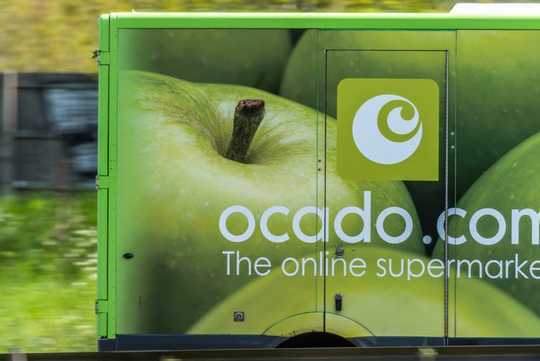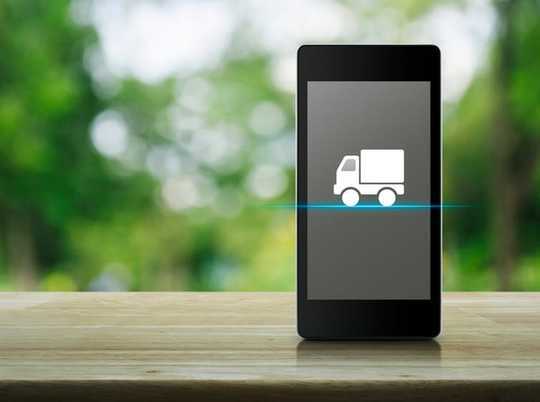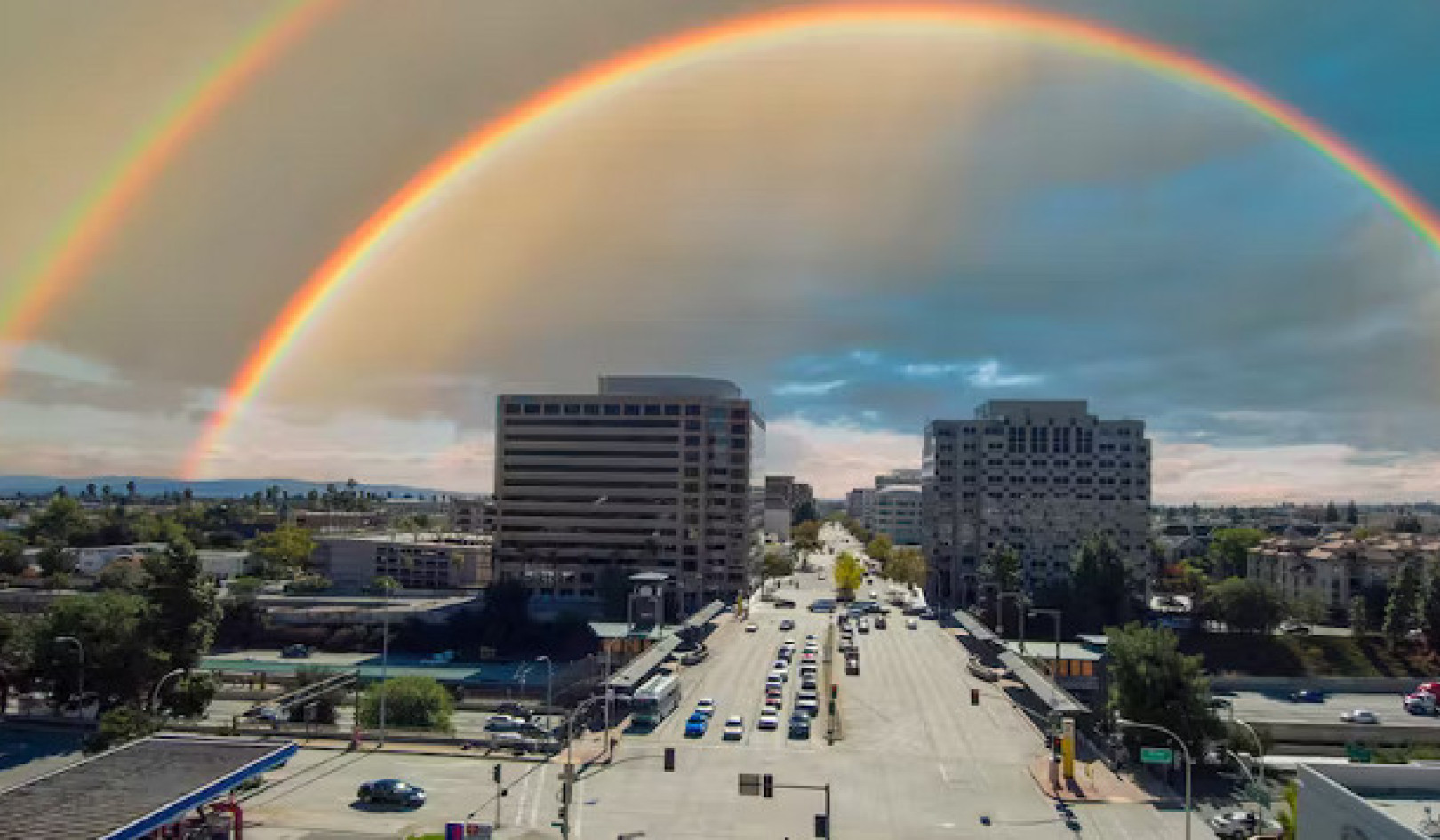Online shopping continues to grow at a phenomenal rate. In 2018, the market value of UK retail was £381 billion of which online transactions made up almost one-fifth. That’s £12.3 billion of grocery items and £58.8 billion of all non-food items purchased online.
As with almost any human activity, this behaviour has a significant impact on the environment. Online shopping uses tonnes of packaging (overall British retail uses 59 billion pieces of plastic each year), and a vast number of air polluting daily deliveries on the roads.
Yet there are ways in which retailers and consumers can use home delivery to reduce the environmental impact of our shopping habits.
Take online grocery shopping, currently dominated in the UK by the big names of Tesco (42.8% market share), Asda (18.41%), Ocado (16.16%) and Sainsbury’s (14.09%). These large organisations have sufficient resources to invest in the cleanest zero-emission (predominantly electric) vehicles for their home delivery service.
The journeys these vehicles make to customers’ homes are likely to present a much smaller carbon footprint than if those customers drove to the supermarket themselves. Delivering to multiple customers over the course of a trip also significantly reduces the total number of journeys required.
So too does the wide variety of delivery slots made available by retailers, along with an increasing number of customers as the popularity of home delivery grows. These factors all allow retailers to optimise delivery routes and reduce their environmental impact.
For non-food home delivery though, the final stage of delivery to the customer is often not managed directly by the retailers, but out-sourced to independent couriers. This fragmented nature of “last-mile” service provision means there is less likely to be the same investment in low-emission vehicles. Indeed, many couriers are self-employed, using their personal vehicles to deliver parcels.
Non-food online deliveries also require each item to be not only individually packed, but also protected by additional packaging to prevent damage in transit.
Delivery without delay
Another trend having a major impact on the environment is the offer of next-day (and even same-day) deliveries. For non-food items, this means always having available stock – which requires more space to keep it and more energy to store and move it. From a fresh food perspective, the offer of constant availability results in increased levels of food waste.
Also, in order to satisfy such swift delivery requirements, additional vehicles are required to ensure such speedy delivery – often in vehicles that are only partly loaded.
Another point to consider is that online deliveries do not necessarily substitute our own journeys to shops, resulting in an increased net carbon footprint. And research indicates that returns from online purchases are significantly greater than store purchases, resulting in increased levels of waste and increased transportation.
Yet there are choices that consumers can make to reduce the impact their shopping decisions have on the environment.
Greener options
When short distances (less than 3km, say) exist between shopper and retailer, it is environmentally beneficial to shop in store. It is only when longer deliveries are required that online delivery becomes a greener option.
Where possible, customers who want to benefit from an online shopping experience should opt for the click and collect option to pick up in store, reducing the logistical demands on the supplier.
Locker boxes, where you pick up your delivery from a secure locker, offer a good compromise between increasing convenience and reducing environmental impact. A further green, last-mile initiative is crowd-sourcing, where members of the public drop off packages as part of their planned journey for a small fee.
From a packaging perspective, more and more retailers are now offering bag-free options or alternatives to plastic bags. Environmentally conscious consumers should seek out retailers which offer these options.

A green option? Shutterstock/Jevanto Productions
Encouragingly, retailers are well aware of all of these challenges – and many are working hard to address environmental issues. There is an increased use of biodegradable packaging throughout the supply chain, and more focus on “closing-the-loop” – where retailers are taking responsibility for reusing and recycling products.
But there are elements of the current approach to online shopping that are simply not sustainable. These need to be urgently addressed to meet global challenges regarding air quality and global warming. Overall, the environmental sustainability of the retail market is a complex conundrum. But simple consumer choices can go a long way to making the way we shop greener.
About the Authors
Stuart Milligan, Academic Manager of Procurement, Logistics & Supply Chain Management, University of South Wales and Baris Yalabik, Senior Lecturer in Operations and Supply Management, University of Bath
This article is republished from The Conversation under a Creative Commons license. Read the original article.
Recommended books:
Capital in the Twenty-First Century
by Thomas Piketty. (Translated by Arthur Goldhammer)
 In Capital in the Twenty-First Century, Thomas Piketty analyzes a unique collection of data from twenty countries, ranging as far back as the eighteenth century, to uncover key economic and social patterns. But economic trends are not acts of God. Political action has curbed dangerous inequalities in the past, says Thomas Piketty, and may do so again. A work of extraordinary ambition, originality, and rigor, Capital in the Twenty-First Century reorients our understanding of economic history and confronts us with sobering lessons for today. His findings will transform debate and set the agenda for the next generation of thought about wealth and inequality.
In Capital in the Twenty-First Century, Thomas Piketty analyzes a unique collection of data from twenty countries, ranging as far back as the eighteenth century, to uncover key economic and social patterns. But economic trends are not acts of God. Political action has curbed dangerous inequalities in the past, says Thomas Piketty, and may do so again. A work of extraordinary ambition, originality, and rigor, Capital in the Twenty-First Century reorients our understanding of economic history and confronts us with sobering lessons for today. His findings will transform debate and set the agenda for the next generation of thought about wealth and inequality.
Click here for more info and/or to order this book on Amazon.
Nature's Fortune: How Business and Society Thrive by Investing in Nature
by Mark R. Tercek and Jonathan S. Adams.
 What is nature worth? The answer to this question—which traditionally has been framed in environmental terms—is revolutionizing the way we do business. In Nature’s Fortune, Mark Tercek, CEO of The Nature Conservancy and former investment banker, and science writer Jonathan Adams argue that nature is not only the foundation of human well-being, but also the smartest commercial investment any business or government can make. The forests, floodplains, and oyster reefs often seen simply as raw materials or as obstacles to be cleared in the name of progress are, in fact as important to our future prosperity as technology or law or business innovation. Nature’s Fortune offers an essential guide to the world’s economic—and environmental—well-being.
What is nature worth? The answer to this question—which traditionally has been framed in environmental terms—is revolutionizing the way we do business. In Nature’s Fortune, Mark Tercek, CEO of The Nature Conservancy and former investment banker, and science writer Jonathan Adams argue that nature is not only the foundation of human well-being, but also the smartest commercial investment any business or government can make. The forests, floodplains, and oyster reefs often seen simply as raw materials or as obstacles to be cleared in the name of progress are, in fact as important to our future prosperity as technology or law or business innovation. Nature’s Fortune offers an essential guide to the world’s economic—and environmental—well-being.
Click here for more info and/or to order this book on Amazon.
Beyond Outrage: What has gone wrong with our economy and our democracy, and how to fix it -- by Robert B. Reich
 In this timely book, Robert B. Reich argues that nothing good happens in Washington unless citizens are energized and organized to make sure Washington acts in the public good. The first step is to see the big picture. Beyond Outrage connects the dots, showing why the increasing share of income and wealth going to the top has hobbled jobs and growth for everyone else, undermining our democracy; caused Americans to become increasingly cynical about public life; and turned many Americans against one another. He also explains why the proposals of the “regressive right” are dead wrong and provides a clear roadmap of what must be done instead. Here’s a plan for action for everyone who cares about the future of America.
In this timely book, Robert B. Reich argues that nothing good happens in Washington unless citizens are energized and organized to make sure Washington acts in the public good. The first step is to see the big picture. Beyond Outrage connects the dots, showing why the increasing share of income and wealth going to the top has hobbled jobs and growth for everyone else, undermining our democracy; caused Americans to become increasingly cynical about public life; and turned many Americans against one another. He also explains why the proposals of the “regressive right” are dead wrong and provides a clear roadmap of what must be done instead. Here’s a plan for action for everyone who cares about the future of America.
Click here for more info or to order this book on Amazon.
This Changes Everything: Occupy Wall Street and the 99% Movement
by Sarah van Gelder and staff of YES! Magazine.
 This Changes Everything shows how the Occupy movement is shifting the way people view themselves and the world, the kind of society they believe is possible, and their own involvement in creating a society that works for the 99% rather than just the 1%. Attempts to pigeonhole this decentralized, fast-evolving movement have led to confusion and misperception. In this volume, the editors of YES! Magazine bring together voices from inside and outside the protests to convey the issues, possibilities, and personalities associated with the Occupy Wall Street movement. This book features contributions from Naomi Klein, David Korten, Rebecca Solnit, Ralph Nader, and others, as well as Occupy activists who were there from the beginning.
This Changes Everything shows how the Occupy movement is shifting the way people view themselves and the world, the kind of society they believe is possible, and their own involvement in creating a society that works for the 99% rather than just the 1%. Attempts to pigeonhole this decentralized, fast-evolving movement have led to confusion and misperception. In this volume, the editors of YES! Magazine bring together voices from inside and outside the protests to convey the issues, possibilities, and personalities associated with the Occupy Wall Street movement. This book features contributions from Naomi Klein, David Korten, Rebecca Solnit, Ralph Nader, and others, as well as Occupy activists who were there from the beginning.
Click here for more info and/or to order this book on Amazon.
























